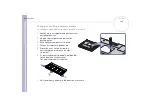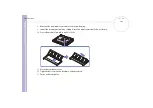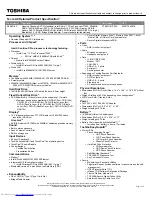
Sony Notebook
User Guide
Glossary
117
Port replicator
An additional device that you can connect to your notebook. The port replicator contains
ports that enable you to connect additional peripherals (such as a printer or a monitor) to
your VAIO. A port replicator is similar to a docking station, but does not include additional
slots for adding expansion boards or storage devices.
Processor
The processor is the brains of the computer; it processes the instructions of your system’s
programs. The processor is also known as the CPU or microprocessor and can be found on
the motherboard (see this word) of your computer.
Product recovery CD-ROM
The product recovery CD-ROMs include the application recovery CD-ROM and the system
recovery CD-ROM(s)
PS/2
A type of mouse or keyboard port.
PSTN
PSTN (Public Switched Telephone Network) refers to the plain old telephone service, the
national telecommunication networks implementing voice transmission by using analog
signals.
RAM
Short for Random Access Memory, the memory used to run programs and store data in
current use. RAM is the fastest kind of memory to read from and write to. Information stored
in RAM is lost when you turn off the computer. The higher the RAM capacity, the faster your
current data can be processed.
Resolution
The degree of sharpness and clarity of an image. Resolution is expressed in pixels. Frequent
computer screen resolutions are 640 x 480 pixels (VGA resolution; appropriate for a 14-inch
screen), 800 x 600 (appropriate for a 15-inch screen), 1,024 by 768 (appropriate for a 17-inch
screen), and 1,280 by 1,024. LCD displays usually use a higher resolution than a CRT of the
same size.
RGB signal cable
RGB stands for Red, Green, Blue. A cable that requires separate transmission types for the
three colours on the display.
SDRAM
Synchronous DRAM is a kind of dynamic random access memory running at a much higher
clock speed than regular memory.
Standard RAM
The amount of RAM that is available on your computer when you purchase it.
Term
Definition


































